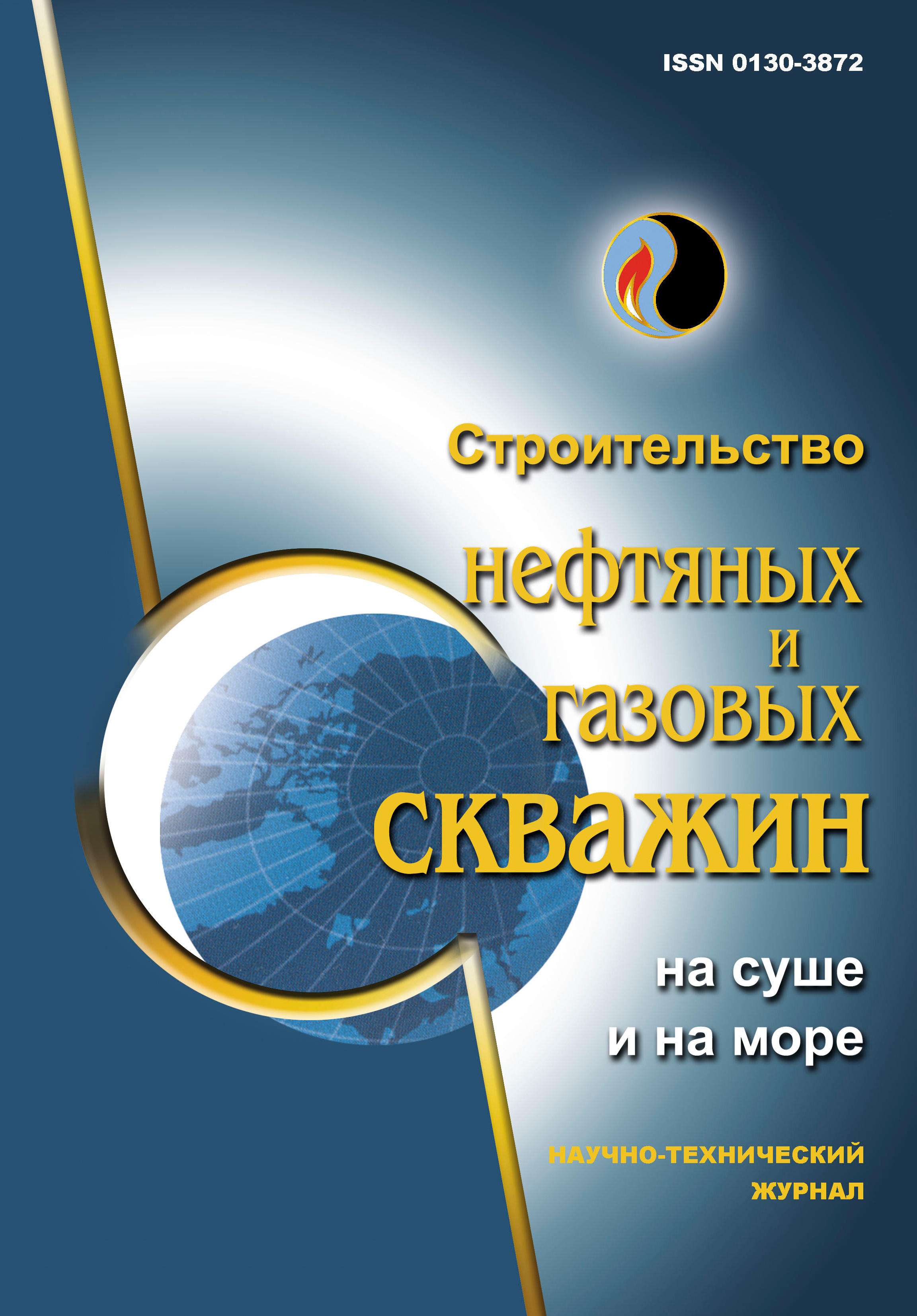Hydraulic calculations when drilling wells
UDC: 622.24:622.016.25:622.24.063.2
DOI: 10.33285/0130-3872-2022-11(359)-13-17
Authors:
KOVAL MAXIM E. 1,2
1,2,
KAPITONOV VLADIMIR A. 1,2
1,2
1 Samara State Technical University, Samara, Russia
2 SamaraNIPIneft, Samara, Russia
Keywords: hydraulic losses calculation, high pressure/high temperature (HP/HT) influence, piston/pressure surge simulation, hydraulic optimization
Annotation:
The article considers an example of hydraulic lossescalculation that occur during the circulation of a water-based drilling fluid. Literature analysis showed that the deviation between the measured and predicted values for vertical and horizontal wellbores is in the range of (0–1) MPa. Also, based on a review of the literature sources, clarifications are considered that require consideration when modeling the behavior of non-aqueous drilling fluids and brines under high pressure/high temperature (HP/HT) conditions.
Bibliography:
1. API RP 13D. Rheology and Hydraulics of Oil-well Drilling Fluids. – 7th edition. – 2017. – 98 p.
2. Clark P.E. Drilling Mud Rheology and the API Recommended Measurements // SPE Production Operations Symposium, April 2–4, 1995, Oklahoma City, Oklahoma. – 1995. – DOI: 10.2118/29543-MS
3. Zamora M., Power D. AADE-02-DFWM-HO-13. Making a Case for AADE Hydraulics and the Unified Rheological Model. – 2002.
4. Ochoa M.V. Analysis of drilling fluid rheology and tool joint effect to reduce errors in hydraulics calculations: a Dissertation by doctor of philosophy. – Texas: Texas A&M University, 2006. – 191 p.
5. Mojisola E. Development and Evaluation of Various Drilling Fluids for Slim Hole Wells: M.S. thesis. – Norman: The University of Oklahoma, 2005.
6. White W.W., Zamora M., Svoboda C.F. Downhole Measurements of Synthetic-Based Drilling Fluid in an Offshore Well Quantify Dynamic Pressure and Temperature Distributions // SPE Drilling & Completion. – 1997. – Vol. 12, Issue 03. – P. 149–157. – DOI: 10.2118/35057-PA
7. Modernization of the API Recommended Practice on Rheology and Hydraulics: Creating Easy Access to Integrated Wellbore Fluids Engineering / P.A. Bern, E.K. Morton, M. Zamora [et al.] // IADC/SPE Drilling Conf., Miami, Florida, USA, Feb. 21–23. – 2006. – DOI: 10.2118/98743-MS
8. Kutasov I. Method Corrects API Bottomhole Circulating Temperature Correlations // Oil & Gas J. – 2002. – Vol. 100, Issue 28. – P. 47–50.
9. Hemphill T., Isambourg P. New Model Predicts Oil, Synthetic Mud Densities // Oil & Gas J. – 2005. – Vol. 103, Issue 16. – P. 56–58.
10. Schuh F.J. Computer Makes Surge-Pressure Calculations Useful // Oil & Gas J. – 1964. – Vol. 62, Issue 31. – P. 96–104.
11. Fontenot J.E., Clark R.K. An Improved Method for Calculating Swab and Surge and Circulating Pressures in a Drilling Well // SPE J. – 1974. – Vol. 14, Issue 05. – P. 451–462. – DOI: 10.2118/4521-PA
12. Robinson L.H., Morgan M. AADE-04-DF-H0-42. Effect of Hole Cleaning on Drilling Rate and Performance // AADE Fluids Conf., Houston, April 06–07. – 2004.
13. Yuejin Luo, Bern P.A., Chambers B.D. Simple Charts to Determine Hole Cleaning Requirements in Deviated Wells // IADC/SPE Drilling Conf., Dallas, Feb. 15–18. – 1994. – DOI: 10.2118/27486-MS
14. Robinson L.H., Ramsey M.S. AADE 01-NC-HO-30. Onsite Continuous Hydraulics Optimization (OCHO) // AADE National Drilling Conf., Houston, March 27–29. – 2001.
15. Sindi W., Prohaska-Marchried M., Thonhauser G. Successful Real-Time Modeling of Wellbore Hydraulics Using Rheology Obtained According to API Recommended Practice 13D // Abu Dhabi Int. Petroleum Exhibition & Conf., Abu Dhabi, UAE, Nov. 7–10. – 2016. – DOI: 10.2118/183398-MS

